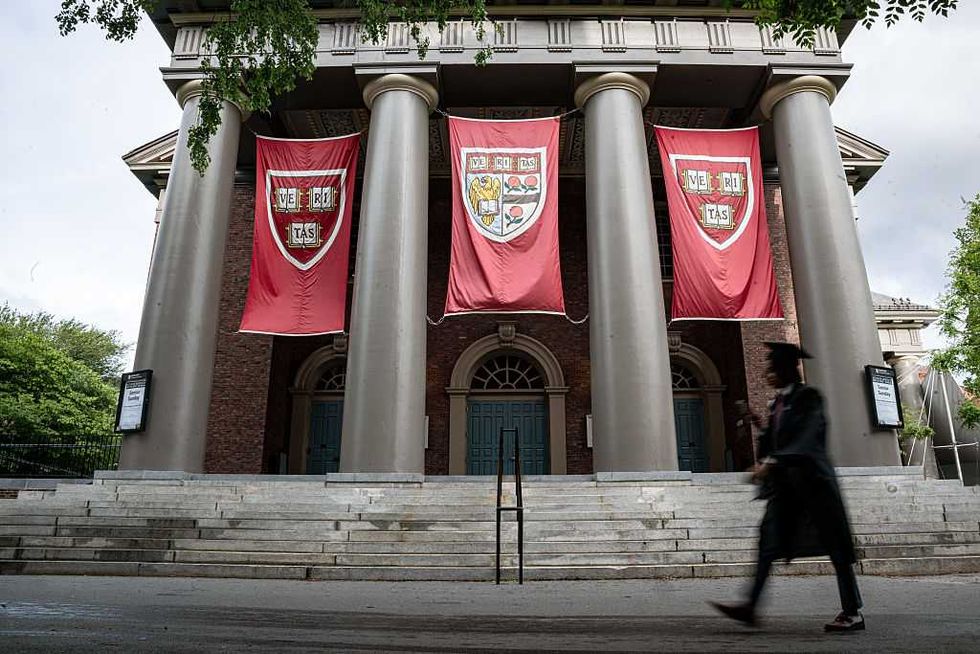
www.dailysignal.com
Swing-District Republicans Counter Dems’ Health Care Arguments in Shutdown
From the beginning of the federal government shutdown, Democrats have been messaging on health care, an issue that has yielded midterm success for the party in the past. But House Republicans on the front line are already hitting back.
As Senate Minority Leader Chuck Schumer, D-N.Y., told reporters shortly before the shutdown began, Democrats are “making this debate a debate on health care.”
There’s historical justification for that strategy. In the 2018 midterms, which followed a Republican attempt to repeal Obamacare, for instance, Democrats gained 40 additional seats in the House of Representatives, handing Rep. Nancy Pelosi, D-Calif., a second turn at wielding the speaker’s gavel.
But Rep. Mike Flood, R-Neb., who chairs the House’s Main Street Caucus—a group made up predominantly of Republicans from purple districts—told The Daily Signal on a press call that Democrats’ messaging won’t work in 2026.
Flood contends Democrats have lost any purported high ground on the matter with their shutdown strategy.
“We were in shutdown situations under Joe Biden’s presidency, where the question was, ‘Do we fund the government, or do we not fund the government?’ Almost every single member of the Main Street Caucus was always voting to fund the government,” said Flood. “So, our caucus has always been the wing of the Republican Party that was there to fund it under Joe Biden.”
Rep. Mike Flood, R-Neb., speaks to a constituent in Lincoln, Neb. (Rebecca S. Gratz/The Washington Post via Getty Images)
One of the Democrats’ main demands throughout the shutdown has been an extension of COVID-era Obamacare premium tax credits. Those credits, if they expire at the end of the year, would revert to pre-COVID-19 levels.
Main Street Caucus Rep. Jen Kiggans, R-Va., is cosponsoring a bill to extend the credits for one year.
Flood argues that the members of his caucus have an edge over Democrats, since they are forwarding legislation to be passed in regular order, rather than holding the government hostage.
“We have 13 members that have introduced legislation that extends the [Affordable Care Act] tax-credit program, and so a good number of our members are very invested in that, but we can’t get to the table until the Senate does its job,” Flood told The Daily Signal. “We did our job. We set [funding] up for November 21, which gives us plenty of time for us to deal with that.”
Flood did, however, clarify that his caucus does want to address issues of fraud within the Affordable Care Act.
“We see value in extending the ACA. We understand there’s a lot of fraud there, and we want to root that out. And we’re the ones at the table in a bipartisan manner that are ready to tackle that issue, but we can’t tackle it when the government’s not open,” he said.
Rep. Nicole Malliotakis, R-N.Y. (Tom Williams/CQ-Roll Call via Getty Images)
Rep. Nicole Malliotakis, R-N.Y., who represents all of Staten Island and part of Brooklyn, said on the press call that she was going on the offensive when it comes to the health care issue in her home district.
She noted the fact that Senate Minority Leader Chuck Schumer and House Minority Leader Hakeem Jeffries, both D-N.Y., are practically her neighbors in New York City.
Schumer “was willing to see women and infants and children go hungry, and he’s willing to strip, by the way, $1.4 billion from the state of New York … in critical funding … . The irony here, he wants to talk about health care, and [he is cutting] $1.4 billion, with a ‘B,’ for New York safety net hospitals that are being stalled right now because of Senator Chuck Schumer not voting for the same bill that he helped negotiate.”
Rep. Gabe Evans, R-Colo. (Alex Wong/Getty Images)
Rep. Gabe Evans, R-Colo., who was elected by fewer than 3,000-vote margin in 2024, also showed eagerness to combat Democrats on the health care issue.
“Folks in Colorado [are] sick and tired of taking their taxpayer money and giving it to illegal immigrants. We know it’s happening. We know the Republicans are putting an end to that through the legislation that we passed, and we know that the Democrats have offered their counterproposal to open the government if we repeal all of those protections and continue to fund illegal immigrant health care via taxpayer money,” said Evans.
“It’s a nonstarter. It’s a non-serious position for the Democrats, and as we’ve discussed on this call, it’s hurting real American folks,” he said.
The post Swing-District Republicans Counter Dems’ Health Care Arguments in Shutdown appeared first on The Daily Signal.

















